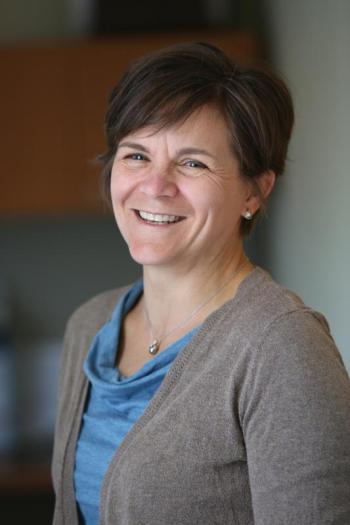Understanding addiction as a chronic disease helps ease stigma
Dr. John Knight, founder and director of the Center for Adolescent Substance Abuse Research at Boston Children’s Hospital said it best: “Addiction is a pediatric disease.”
Children and adolescents often make risky, impulsive decisions and can become addicted before their brains are completely formed — which is why addiction is treated as a chronic disease. The need to reduce physical or emotional pain, to fit or to belong, can drive behaviors that result in lifelong addictive behavior. The pre-frontal cortex of the human brain controls planning, decision-making and moderating social behavior, and is not fully formed until one’s mid-to-late 20s. Most people become addicted well before that.
Change in ways that medical clinics, health systems and communities approach substance abuse and addiction treatment have helped to reduce the stigma of addiction. People can now seek care in primary care offices and be treated by a team of counselors, physicians, nurse practitioners, physician assistants, medical assistants and psychiatrists. Appointments are scheduled and follow up planned in the same manner as treatment for any other medical condition. Symptoms are evaluated, the history of substance use is obtained and decisions are made with each individual about the most appropriate clinical environment needed for care.
A continuous healing relationship develops over time, as the person with addiction works on improvement of healthy behaviors and relationships. As people living with addiction grow in understanding of the impact of addiction on their lives, a new baseline of health and behavior can be established, with stable support through medical and behavioral health care.
Another way to look at addiction is to examine the brain changes that occur with the onset of use of substances such as opioids. According to Harvard Health’s Overcoming Addiction, it all begins with what’s called The Pleasure Principle.
The brain registers all pleasures in the same way, whether they originate with a drug, money, a sexual encounter, or a satisfying meal. In the brain, pleasure has a distinct signature: the release of the neurotransmitter, dopamine. The release of dopamine is so consistently tied with our experience of pleasure that neuroscientists refer to the region as “the brain’s pleasure center.”
All drugs of abuse, from nicotine to heroin, cause a particularly powerful surge of dopamine. The likelihood that the use of a drug will lead to addiction is directly linked to the speed, intensity and reliability of the dopamine release — and this can be different for each individual, depending on a number of personal factors. Even taking the same drug through different ways can influence how likely it is to lead to addiction. The stronger the dopamine signal, the more likely a person is to misuse the drug.
The learning process
Scientists once believed that the experience of pleasure alone was enough to prompt people to continue seeking an addictive substance or activity. But more recent research suggests that the situation is more complicated. Dopamine not only contributes to the experience of pleasure, but also plays a role in learning and memory — two key elements in the transition from simply liking something to becoming addicted to it.
According to the current theory about addiction, dopamine interacts with another neurotransmitter to take over the brain’s system of reward-related learning. The reward circuit in the brain includes areas involved with motivation and memory as well as with pleasure. Addictive substances and behaviors stimulate and overload the same circuit, interfering with motivation and memory. Repeated exposure to an addictive substance or behavior causes nerve cells to communicate in a way that links liking it with wanting it, in turn driving us to go after it. That is, this process motivates us to take action to seek out the source of pleasure while our ability to plan, make decisions and moderate social behavior is impaired.
Compulsion takes over
At this point, compulsion takes over. The pleasure associated with an addictive drug or behavior subsides — and yet the memory of the desired effect and the need to recreate that desired effect (the wanting) persists. It’s as though the normal machinery of motivation is no longer functioning.
The learning process also comes into play. Certain parts of the brain store information about environmental cues associated with the desired substance so that it can be located again. These memories help create a conditioned response — intense craving — whenever the person encounters those cues.
Cravings contribute not only to addiction but to relapse after a hard-won sobriety. A person addicted to heroin may be in danger of relapse when he sees a hypodermic needle or goes somewhere he has once used, for example, while another person might start to drink again after she sees a bottle of whiskey at a family cookout. Conditioned learning helps explain why people who develop an addiction risk relapse even after years of abstinence. It helps explain why it can be very difficult to “just stop it.”
Explaining the brain processes involved with addiction can help us understand that once an addictive substance is started, the brain adapts and changes. These changes can be difficult to overcome, even with those who have tremendous willpower, love for family and friends and devotion to work. While we know the role the brain plays in addiction, it remains unclear as to why some people get addicted and others do not
Hopefully, by continuing to research addiction and the brain, by treating addiction like other chronic diseases and by developing a community of support services, we will all help one another to overcome the stigma associated with addiction.
About the author: Dr. Cynthia J. Dechenes is primary care physician at Lincoln Medical Partners Family Care Center in Boothbay Harbor. She is part of a skilled team that helps support treatment for addiction. For more information in Boothbay, call 207-633-7820. For information in other parts of Lincoln County, call 207-563-4747.
Event Date
Address
United States
























